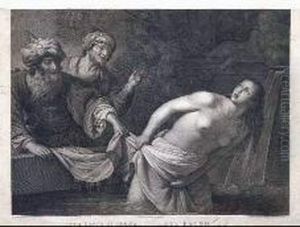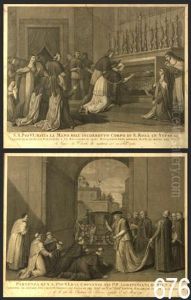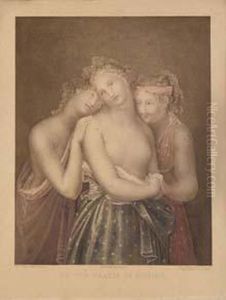Pietro Bonato Paintings
Pietro Bonato was an Italian painter and engraver, born in 1771 in Cisano sul Neva, a small town in the region of Liguria, Italy. His artistic journey began in the vibrant cultural atmosphere of the late 18th century, a period that saw the transition from the Baroque and Rococo styles to Neoclassicism. Bonato's work, however, is most often associated with the Neoclassical movement, reflecting the era's fascination with the art and culture of ancient Greece and Rome. This was a time when artists sought to revive the ideals of harmony, simplicity, and proportion, influenced by the Enlightenment's emphasis on reason and classical antiquity.
Bonato's career unfolded during a tumultuous period in European history, marked by the Napoleonic Wars and the subsequent reshaping of the continent's political landscape. Despite the upheavals, he managed to study and work in various Italian cities, including Rome and Venice, where he was exposed to the works of great masters and the latest artistic trends. His engravings and paintings often depicted historical and mythological themes, characterized by their clarity of form, balanced compositions, and attention to detail, hallmarks of the Neoclassical style.
Not much is documented about Bonato's personal life or his patrons, a common issue for many artists of his era, whose lives were often overshadowed by their more famous contemporaries. However, his contributions to Italian art have not gone unnoticed. His works are part of several European art collections, showcasing his skill in capturing the human form and his ability to convey the philosophical and moral ideals of his time through art.
Pietro Bonato's legacy, while not as widely recognized as that of some of his peers, remains significant in the study of Neoclassical art. He died in 1839, leaving behind a body of work that continues to be appreciated for its beauty and elegance. Through his engravings and paintings, Bonato contributed to the rich tapestry of Italian art history, embodying the Neoclassical spirit of his age and offering inspiration to future generations of artists.


